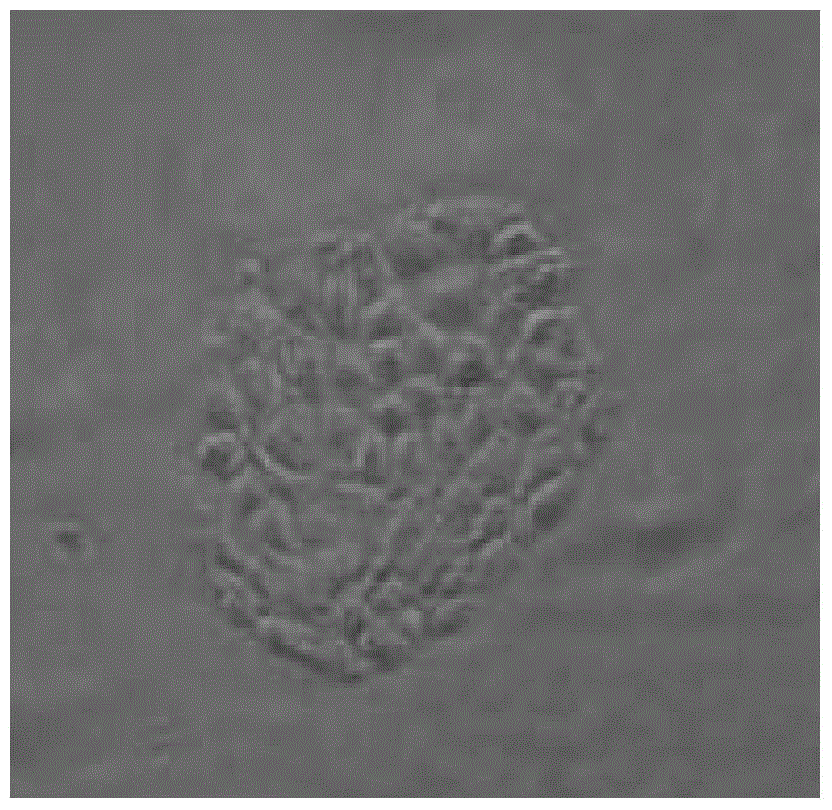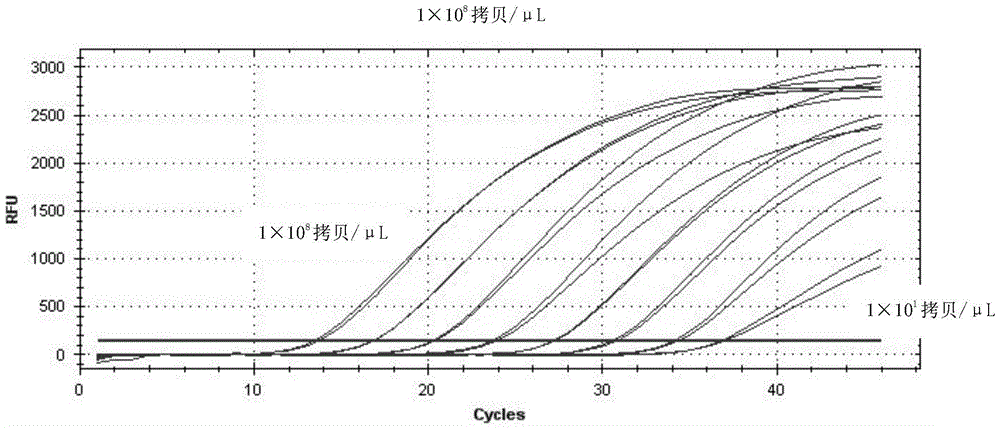Method and special primer for rapidly breeding ST (swine testis) sensitive cell lines of hog cholera virus lapinized virus strain (C strain)
A technology for sensitive cells and swine fever rabbits, applied in the field of bioengineering, can solve problems such as unsatisfactory immune effect, and achieve the effect of overcoming low culture titers
- Summary
- Abstract
- Description
- Claims
- Application Information
AI Technical Summary
Problems solved by technology
Method used
Image
Examples
Embodiment
[0049] Embodiment, rapid selection of classical swine fever rabbitization attenuated strain (C strain) ST sensitive cell line
[0050] The present invention uses RT-PCR technology and real-time fluorescent quantitative RT-PCR technology to rapidly select the method for the sensitive cell line of classical swine fever rabbitization strain (C strain) ST (pig testicular cell), comprising the following steps:
[0051] 1) Obtain ST monoclonal cells
[0052] ST cells (purchased from the American Culture Collection (ATCC)) without exogenous virus contamination were incubated at 37°C, 5% CO 2 Cultured in the incubator for 48h, digested with 0.2% (mass / volume, W / V, unit g / 100mL) trypsin into single scattered cells, then counted the cells, and then used 15% (volume / volume, V / V, Unit mL / 100mL) Serum is diluted in DMEM medium to a cell concentration of 10-100 cells (cells) / mL (generally, trypsin digestion solution and serum addition amount only need to mark the ratio), and pipette Add s...
PUM
 Login to View More
Login to View More Abstract
Description
Claims
Application Information
 Login to View More
Login to View More - R&D
- Intellectual Property
- Life Sciences
- Materials
- Tech Scout
- Unparalleled Data Quality
- Higher Quality Content
- 60% Fewer Hallucinations
Browse by: Latest US Patents, China's latest patents, Technical Efficacy Thesaurus, Application Domain, Technology Topic, Popular Technical Reports.
© 2025 PatSnap. All rights reserved.Legal|Privacy policy|Modern Slavery Act Transparency Statement|Sitemap|About US| Contact US: help@patsnap.com



